Castro Laboreiro, in the parish with the same name and in the borough of Melgaço, lies in Peneda-Gerês National Park, which makes it a touristic attraction right away but, besides that, it hás a unique kind of ancient village buildings and it´s the original place of the world famous canine breed, the Castro Laboreiro dog.
The region…
Furthermore, the village has a rich millenary historical, archaeological and architectural heritage, namely megalithic monuments, the Castle of Castro Laboreiro - acknowledged as a national monument - medieval bridges and churches, community ovens, mills, agriculture and grazing activities, and the unique brandas, inverneiras and fixed places, which are testimonies of the transhumance that happens here as well.
The region´s forests are dominated by oak-trees. We can also find the arbutus-tree, the holly, the laurel cherry-tree, the pine-tree and the white birch. Bushes are more common in the higher areas where mainly brooms, furzes and heathers grow. The most representative animal species are the wild boar, the deer, the badger and the otter.
At the village, visitors may find lodging in recovered village houses and mills
.
The gastronomic offer is varied, with typical dishes that include kid, bacon steaks, smoked sausages, rye bread and corn bread. There´s also two typical desserts: bucho doce (usually pork stomach cooked with lard, sugar, eggs, bread and cinnamon) and sopa seca de pão duro (Minho's traditional recipe resembles Cozido à Portuguesa, usually made with more or less the same ingredients: beef, pork, chicken, smoked sausages, cabbages, carrots, and bread).
After that, for an easier digestion and for a deeper contact with the natural environment, we suggest a walk or a ride in a four-wheel drive vehicle through Rodeiro, Alto da Portela de Pau, Pedra Mourisca, Alto dos Cepos Alvos, Portos, Varziela and, again, Castro Laboreiro.
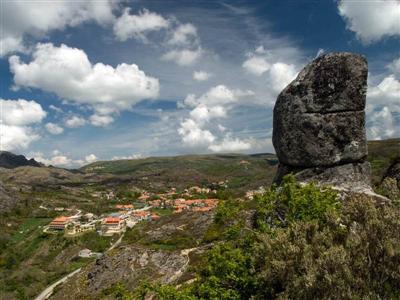
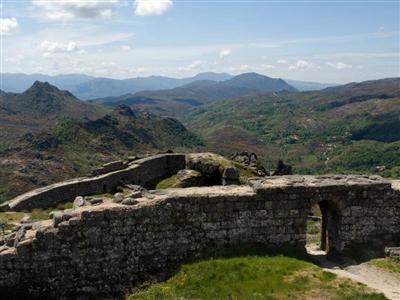
| House | Capacity |
|---|---|
| Fábrica do Chocolate | Pax 2 |
| Moinho do Poço Verde | Pax 2 |
| Casa do Barreiro | Pax 4 |
| Casa João Alvo | Pax 6 |
| Casa das Falagueiras | Pax 8 |
| Casa Fonte do Laboreiro | Pax 8 |
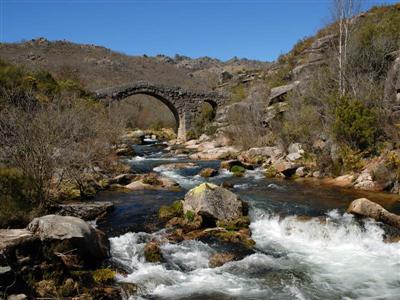
How to get there: From Porto Airport: Take the motorway A3 to Braga / Valença and continue for about 100 km always heading Valença. About 5,5 km after the tolls, turn right in the direction of Valença and continue on the N202 for about 40 km towards Melgaço. In Melgaço follow the directions to Castro Laboreiro / Lamas de Mouro and continue for about 19 km until you reach Lamas de Mouro where you must turn to the left towards ´Castro Laboreiro`. Continue on the N202-3 and after about 7 km you will reach the village of Castro Laboreiro.
GPS coordinates: 42° 1'48.44"N 8° 9'30.76"O
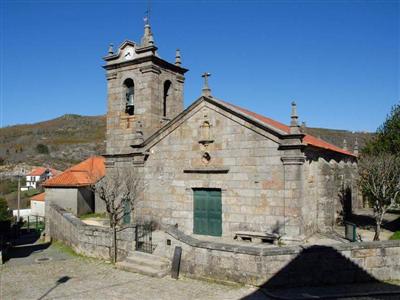 Due to their geographical constraints, the Aldeias de Portugal are often not provided with all the equipments and facilities that we usually find in urban centres. To make your stay at Aldeias de Portugal more pleasant we will mention here the facilities and equipments that can be found at the villages and/or surroundings.
Due to their geographical constraints, the Aldeias de Portugal are often not provided with all the equipments and facilities that we usually find in urban centres. To make your stay at Aldeias de Portugal more pleasant we will mention here the facilities and equipments that can be found at the villages and/or surroundings.
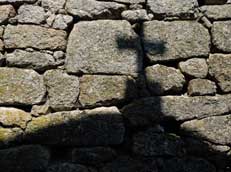 In the Aldeias de Portugal many perspectives catch the interest of their visitors. In these villages many constructions and archaeological findings prove us the existence of men thousands of years ago. Folklore is the most genuine, colourful and joyful of Portugal. Also culture, gastronomy, arts, artisans and traditional crafts of ancient times, were kept alive until the day of today.
In the Aldeias de Portugal many perspectives catch the interest of their visitors. In these villages many constructions and archaeological findings prove us the existence of men thousands of years ago. Folklore is the most genuine, colourful and joyful of Portugal. Also culture, gastronomy, arts, artisans and traditional crafts of ancient times, were kept alive until the day of today.
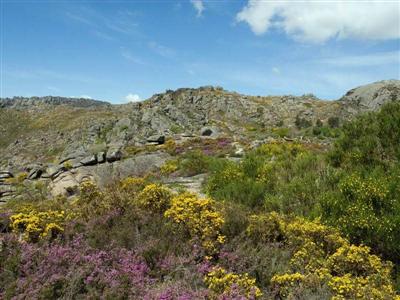
Castro Laboreiro is located almost at 1000 meters of altitude, in the mountainous area of Peneda-Gerês. Castro Laboreiro derives from
A trip to Castro Laboreiro takes us to Parque Nacional da Peneda-Gerês and a different side of Melgaço where the villages are isolated and so being one of Minho's better preserved habitats.
A particularity of this mountain area is certainly its houses' traditional architecture. It is also in Castro Laboreiro where we can find some of the region's most unique settlings – the “brandas” and the “inverneiras”, some of which still have traces of their traditional thatch roofs – that transmit the quotidian lives of the people who live in the mountain. The ´Brandas´, in the higher located places, are very pleasant and productive during the heat and provide better food to the animals. It is also a kind of a summer-house to the population and cattle of the village and its visitors. The ´inverneiras´, in the lower located places in the valleys of the village, are a refuge to the cold weather.
The Castle of Castro Laboreiro is surely one of the strongest icons of Melgaço, not because of the role it played in the Portuguese History, but especially due the beauty of its geographic location with a magnificent view heading Galician plateaus. There is no certainty about the castle's foundation, but it is known that it was conquered in 1141 by D. Afonso Henriques, during the new kingdom's independency fights.
During the reign of D. Dinis, Castro Laboreiro went through a deep reform that gave the fortress the look it still keeps today: the main building with a cistern and a bigger second area in the south part to keep the cattle and goods safe during the times of war.
This characteristic seems to be unique in the country and is a proof of the importance of animal breeding for the medieval mountain communities of Castro Laboreiro. On the other hand, this intervention also reveals the importance of Castro Laboreiro in the national defence, thanks to its strategic location in an area of difficult access.
Time passed and the fortress lost its importance. In 1944 the Castle was classified as National Monument. The first remodelling work only started in 1979 and was just meant to reinforce the castle's structure without making big changes to the building.
 |
 |